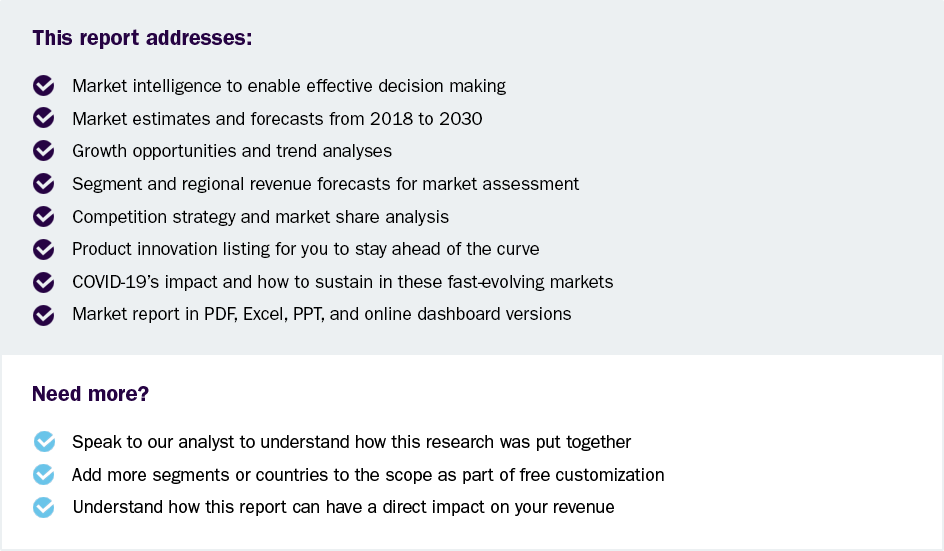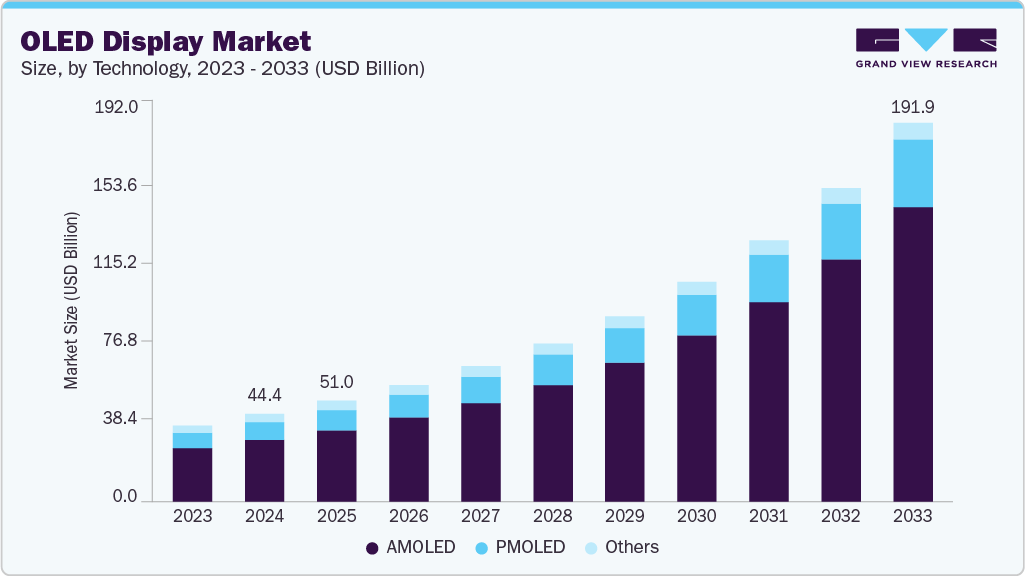- Home
- »
- Next Generation Technologies
- »
-
U.S. Weather Forecasting Services Market Size Report, 2030GVR Report cover
![U.S. Weather Forecasting Services Market Size, Share & Trends Report]()
U.S. Weather Forecasting Services Market (2025 - 2030) Size, Share & Trends Analysis Report By Forecast, By Organization Size (Large Enterprises, Small & Medium Enterprises), By Industry, And Segment Forecasts
- Report ID: GVR-4-68040-618-3
- Number of Report Pages: 120
- Format: PDF
- Historical Range: 2018 - 2024
- Forecast Period: 2025 - 2030
- Industry: Technology
- Report Summary
- Table of Contents
- Segmentation
- Methodology
- Download FREE Sample
-
Download Sample Report
Market Size & Trends
The U.S. weather forecasting services market size was estimated at USD 652.6 million in 2024 and is projected to grow at a CAGR of 7.0% from 2025 to 2030. The increasing frequency and severity of extreme weather events are driving heightened reliance on accurate forecasting across critical U.S. sectors such as agriculture, aviation, logistics, and energy. Advancements in AI, machine learning, and satellite-based technologies are significantly enhancing the precision and responsiveness of forecasting models. Additionally, the growing adoption of real-time, hyper-local data services and the rapid expansion of renewable energy infrastructure are accelerating the need for customized weather intelligence solutions, fueling the growth of the U.S. weather forecasting services market.

The U.S. weather forecasting services industry is increasingly driven by the urgent demand for sustainability and energy efficiency. Manufacturers are prioritizing the development of eco-friendly refrigerants and high-efficiency compressor technologies to meet global climate targets. Regulatory frameworks, particularly from agencies like the EPA that are phasing out harmful hydrofluorocarbons (HFCs), are accelerating the shift toward greener alternatives. This strong focus on sustainability is fueling innovation and investment, positioning the market for sustained long-term growth.
The rising consumer demand for fresh and frozen foods, amplified by the growth of e-commerce grocery platforms, is significantly accelerating the U.S. weather forecasting services industry. Changing dietary habits and the convenience of online shopping are prompting the expansion and modernization of cold chain infrastructure to ensure product freshness and safety. Retailers and food service operators invest heavily in temperature-controlled storage and transportation solutions to keep pace with this demand. This development highlights the crucial role of weather forecasting in maintaining precise environmental controls throughout the supply chain.
Innovations such as self-cleaning condensers and adaptive defrost mechanisms are advancing the U.S. weather forecasting services industry by enhancing equipment reliability and reducing maintenance requirements. These technologies extend refrigeration unit lifespans and minimize downtime, directly contributing to lower operational costs. Increased equipment dependability supports uninterrupted cold storage, which is essential for food safety and quality assurance. The growing adoption of such innovations reflects the industry’s commitment to sustainable, efficient, and cost-effective refrigeration solutions.
Rapid urbanization and the proliferation of micro-fulfillment centers in densely populated metropolitan areas are reshaping the U.S. weather forecasting services industry by boosting demand for compact and energy-efficient refrigeration systems. Limited space in urban environments drives the need for smaller yet highly efficient refrigeration units, fostering innovation in product design. This trend is vital for supporting last-mile delivery and the rapid fulfillment of online grocery orders. As a result, the industry is evolving to meet new logistical challenges by developing tailored solutions for urban distribution hubs.
The rise of consumer demand for transparency and traceability in food sourcing is pushing the U.S. weather forecasting services industry to provide more granular environmental data along the cold chain. Stakeholders are leveraging weather analytics to document and verify the conditions products are exposed to from farm to shelf. This transparency is enhancing compliance with food safety certifications and meet consumer expectations for quality assurance. As a result, the industry is evolving to deliver detailed, verifiable climate insights that support brand trust and regulatory adherence.
Forecast Insights
The short-range segment accounted for a significant market share of over 26% in 2024, owing to the increasing demand for precise, near-term weather predictions across agriculture, aviation, and emergency response sectors. The integration of high-performance computing, advanced radar systems, and AI-based forecasting models is significantly enhancing short-range accuracy and reliability. These technologies support critical decision-making, optimize scheduling, and reduce economic losses from sudden weather disruptions. The short-range segment continues to dominate the U.S. weather forecasting services market due to its vital role in operational continuity and safety assurance.

The medium-range segment is expected to grow at the fastest CAGR of 8.1% from 2025 to 2030, owing to increasing climate variability and the growing importance of proactive disaster preparedness across public safety and insurance industries. Enhanced data integration from IoT sensors, drones, and remote sensing technologies is enabling more dynamic and localized medium-range forecasts. These capabilities support informed decision-making that minimizes operational disruptions and financial losses during adverse weather events. Consequently, the medium-range segment is becoming indispensable for industries seeking a competitive edge through improved risk management.
Organization Size Insights
The large enterprises segment accounted for the largest market share in 2024, driven by rising demand for customized, high-precision weather data to support strategic operations. Industries such as aviation, logistics, energy, and agriculture rely heavily on long- and medium-range forecasts to manage supply chains, minimize weather-related disruptions, and optimize performance. These enterprises are increasingly adopting AI-powered analytics, real-time dashboards, and API-integrated solutions for seamless decision-making. As weather volatility intensifies, large enterprises prioritize advanced forecasting services to protect assets, enhance resilience, and gain a competitive advantage.
The small & medium enterprises segment is expected to grow at the fastest CAGR from 2025 to 2030, primarily driven by the growing availability of affordable, subscription-based forecasting solutions. SMEs across agriculture, retail, tourism, and construction are increasingly leveraging short- to medium-range forecasts to optimize day-to-day operations and reduce weather-related risks. Cloud-based platforms and mobile applications are enabling easy access to tailored weather insights without the need for heavy IT infrastructure. As digital adoption rises, SMEs are recognizing weather intelligence as a vital tool for improving efficiency, resilience, and business continuity.
Industry Insights
The aviation segment held the largest market share in 2024. The increasing frequency of extreme weather conditions such as turbulence, lightning, and fog is driving heightened demand for advanced predictive weather analytics within the aviation sector. Airlines are leveraging machine learning-based tools for turbulence detection, wind shear warnings, and nowcasting to enhance passenger safety and minimize the financial impact of flight diversions. These intelligent solutions are not only streamlining flight path planning but also supporting improved on-time performance and greater operational resilience. As the aviation industry becomes more data-centric, weather forecasting becomes a strategic asset essential for risk mitigation and efficient decision-making.
The renewables segment is expected to grow at the fastest CAGR from 2025 to 2030, driven by the critical need for accurate weather data to optimize solar and wind energy generation. Operators are increasingly integrating advanced forecasting tools to predict cloud cover, wind speeds, and temperature fluctuations, enabling more precise energy output planning. These insights are essential for grid stability, energy trading, and reducing reliance on backup fossil fuel systems. As the transition to clean energy accelerates, high-accuracy weather forecasting is becoming indispensable to maximizing efficiency and profitability in renewable energy operations.
Key U.S. Weather Forecasting Services Company Insights
Some of the key players operating in the market include AccuWeather Inc. and International Business Machines Corporation (IBM) among others.
-
AccuWeather Inc. is a global leader in weather forecasting and digital weather content services, known for its proprietary forecasting models and wide consumer reach. The company provides hyperlocal forecasts, severe weather alerts, and business-focused analytics for various industries including agriculture, energy, and media. AccuWeather specializes in delivering accurate and actionable weather data via mobile apps, websites, and enterprise solutions. Its innovative platforms integrate AI and big data to enhance forecast precision and user engagement.
-
International Business Machines Corporation (IBM), through its subsidiary The Weather Company, is a key player in the weather forecasting services market, offering AI-powered weather data and predictive analytics. Its solutions cater to industries like aviation, agriculture, insurance, and energy by integrating vast meteorological data into operational decision-making. IBM’s implementation of the JEDI system positions it at the forefront of global numerical weather prediction advancements. The company's strategic focus lies in combining machine learning, IoT, and cloud infrastructure to improve forecast accuracy and business outcomes.
Some of the emerging market players in the market include Spire Global Inc. and Tomorrow.io among others
-
Tomorrow.io is an innovative U.S.-based weather technology company that focuses on micro-weather forecasting and decision-intelligence tools tailored to business needs. It serves industries such as transportation, defense, construction, and sports with high-resolution weather modeling and automated operational alerts. The company is also deploying proprietary weather satellites to enhance global coverage and reduce data latency. Tomorrow.io’s strength lies in transforming raw weather data into customizable action plans, making it a fast-growing disruptor in the forecasting landscape.
-
Spire Global Inc. specializes in leveraging satellite data and AI-powered analytics to offer unique weather and climate insights. The company operates a large constellation of nanosatellites that capture atmospheric data, enhancing global weather models and forecasting accuracy. Spire’s solutions are gaining traction in maritime, aviation, and government sectors for improved situational awareness. It is recognized for innovation in space-based weather intelligence and real-time monitoring.
Key U.S. Weather Forecasting Service Companies:
- AccuWeather Inc.
- International Business Machines Corporation (IBM)
- CustomWeather, Inc.
- DTN LLC
- Campbell Scientific Inc.
- Precision Weather
- National Oceanic and Atmospheric Administration (NOAA)
- Spire Global Inc.
- Tomorrow.io
- Advanced Environmental Monitoring LLC.
Recent Developments
-
In June 2025, Tomorrow.io, U.S.-based weather intelligence firm, partnered with the Philippines' National Irrigation Administration (NIA) and Department of Agriculture to deploy AI-powered weather forecasting for farmers. The initiative leverages satellite-based data and machine learning to deliver hyperlocal, real-time forecasts. This collaboration aims to improve agricultural productivity and reduce climate-related crop losses across remote regions in the Philippines.
-
In April 2025, The Weather Company, partnering with airlines, introduced Maverick Dispatch, an advanced weather intelligence platform designed to support U.S. aviation operations. This platform combines real-time weather data, AI analytics, and global flight tracking to improve operational efficiency and safety. By forecasting weather disruptions early, Maverick Dispatch enables airlines to optimize flight planning and minimize delays.
-
In March 2025, The Weather Company announced the first operational use of the JEDI (Joint Effort for Data Assimilation Integration) system, representing a major leap forward in U.S. weather forecasting capabilities. This innovation allows for the seamless integration of extensive observational data into more precise and timely weather models, significantly improving forecast accuracy. The deployment of JEDI highlights a strategic commitment to advancing next-generation forecasting infrastructure to support better decision-making across weather-sensitive industries.
U.S. Weather Forecasting Services Market Report Scope:
Report Attribute
Details
Market size value in 2025
USD 697.5 million
Revenue forecast in 2030
USD 977.8 million
Growth rate
CAGR of 7.0% from 2025 to 2030
Base year for estimation
2024
Historical data
2018 - 2024
Forecast period
2025 - 2030
Quantitative units
Revenue in USD million/billion and CAGR from 2025 to 2030
Report coverage
Revenue forecast, company ranking, competitive landscape, growth factors, and trends
Segments covered
Forecast, organization size, industry
Country scope
U.S.
Key companies profiled
AccuWeather Inc.; International Business Machines Corporation (IBM); CustomWeather, Inc.; DTN LLC; Campbell Scientific Inc.; Precision Weather; National Oceanic and Atmospheric Administration (NOAA); Spire Global Inc.; Tomorrow.io; Advanced Environmental Monitoring LLC.
Customization scope
Free report customization (equivalent to up to 8 analyst’s working days) with purchase. Addition or alteration to country, regional & segment scope.
Pricing and purchase options
Avail customized purchase options to meet your exact research needs. Explore purchase options
U.S. Weather Forecasting Services Market Report Segmentation
This report forecasts revenue growth at the country level and provides an analysis of the latest industry trends in each of the sub-segments from 2018 to 2030. For this study, Grand View Research has segmented the U.S. weather forecasting services market report based on forecast, organization size, and industry:
-
Forecast Outlook (Revenue, USD Million, 2018 - 2030)
-
Nowcasting
-
Short-range
-
Medium-range
-
Long-range
-
-
Organization Size Outlook (Revenue, USD Million, 2018 - 2030)
-
Large Enterprises
-
Small & Medium Enterprises
-
-
Industry Outlook (Revenue, USD Million, 2018 - 2030)
-
Agriculture
-
Aviation
-
Energy & Utilities
-
Renewables
-
Retail
-
Manufacturing
-
Media
-
Logistics & Transportation
-
Marine
-
Others
-
Frequently Asked Questions About This Report
b. The global U.S. weather forecasting services market size was estimated at USD 652.6 million in 2024 and is expected to reach USD 697.5 million in 2025.
b. The global U.S. weather forecasting services market is expected to grow at a compound annual growth rate of 7.0% from 2025 to 2030 to reach USD 977.8 million by 2030.
b. The short-range segment in the U.S. weather forecasting services market is expected to account for a share of over 26% in 2024, owing to the increasing demand for precise, near-term weather predictions across agriculture, aviation, and emergency response sectors. The integration of high-performance computing, advanced radar systems, and AI-based forecasting models is significantly enhancing short-range accuracy and reliability.
b. Some key players operating in the U.S. weather forecasting services market include AccuWeather Inc., International Business Machines Corporation (IBM), CustomWeather, Inc., DTN LLC, Campbell Scientific Inc., Precision Weather, National Oceanic and Atmospheric Administration (NOAA), Spire Global Inc., Tomorrow.io, and Advanced Environmental Monitoring LLC.
b. Key factors that are driving the market growth include increasing climate variability and frequency of extreme weather events, rising demand from weather-sensitive industries such as agriculture, aviation, and logistics, advancements in AI, big data analytics, and satellite-based forecasting technologies.
Share this report with your colleague or friend.
Need a Tailored Report?
Customize this report to your needs — add regions, segments, or data points, with 20% free customization.

ISO 9001:2015 & 27001:2022 Certified
We are GDPR and CCPA compliant! Your transaction & personal information is safe and secure. For more details, please read our privacy policy.
Trusted market insights - try a free sample
See how our reports are structured and why industry leaders rely on Grand View Research. Get a free sample or ask us to tailor this report to your needs.










